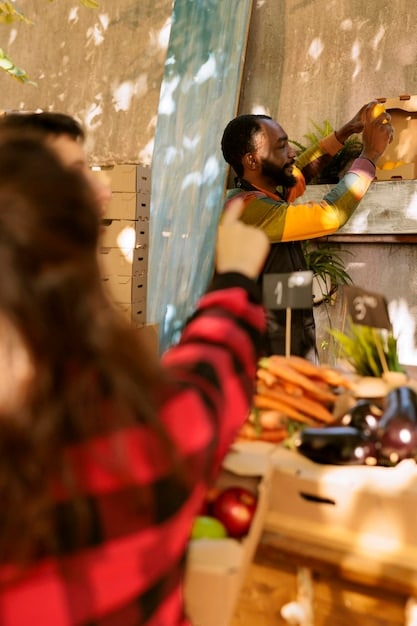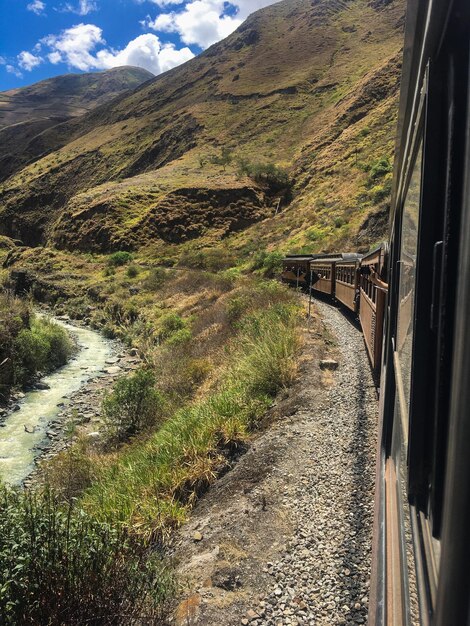Sustainable Tourism in Peru: Minimizing Environmental Impact for US Travelers

Sustainable tourism in Peru involves eco-friendly practices that US travelers can adopt to minimize their environmental impact, contributing to the preservation of Peru’s natural and cultural heritage.
Embarking on a journey to Peru? Discover how you, as a US traveler, can embrace sustainable tourism in Peru, ensuring your adventure minimizes environmental impact and supports local communities.
Sustainable Tourism in Peru: An Introduction for US Travelers
Peru, a land of ancient civilizations and stunning landscapes, attracts tourists from all over the world. However, it’s crucial to consider the environmental impact of tourism and adopt sustainable practices. For US travelers, understanding how to minimize their footprint while exploring Peru is essential. This involves making informed choices about transportation, accommodation, and activities.
Understanding Sustainable Tourism
Sustainable tourism focuses on balancing the needs of tourists, the environment, and local communities. It aims to minimize negative impacts and maximize the positive contributions of tourism. This includes preserving natural resources, respecting local cultures, and supporting economic development.
- Choosing eco-friendly accommodations can greatly reduce your environmental impact.
- Supporting local businesses ensures that your money directly benefits the community.
- Respecting local customs and traditions helps preserve Peru’s cultural heritage.
The Importance of Responsible Travel
Responsible travel goes beyond just being eco-friendly. It involves being mindful of the social and economic impacts of your trip. This means engaging with local communities, learning about their history and culture, and avoiding activities that exploit people or resources.
By practicing responsible travel, US tourists can help ensure that future generations can also enjoy the beauty and richness of Peru.

In conclusion, sustainable tourism in Peru is about more than just reducing your carbon footprint. It’s about creating a positive impact and contributing to the well-being of the people and the environment.
Eco-Friendly Accommodation Options
Selecting the right accommodation is a crucial step in practicing sustainable tourism. Eco-friendly accommodations prioritize energy efficiency, waste reduction, and water conservation. They often use locally sourced materials and support local communities.
Identifying Eco-Lodges and Hotels
Eco-lodges and hotels are designed to minimize their environmental impact. They often feature sustainable building practices, renewable energy sources, and water-saving technologies. Look for certifications such as LEED or Green Globe.
- Research accommodations that have environmental certifications.
- Prioritize lodges that use renewable energy sources like solar power.
- Inquire about their waste management practices and water conservation efforts.
Tips for Sustainable Stays
Even if you’re not staying in a dedicated eco-lodge, there are several ways to make your stay more sustainable. Simple actions like reusing towels, turning off lights when you leave the room, and minimizing water usage can make a big difference.
Consider bringing your own reusable water bottle and toiletries to reduce waste. Choosing accommodations that support local communities by hiring local staff and sourcing goods locally also contributes to sustainable tourism.
Ultimately, choosing eco-friendly accommodation is an important way for US travelers to enjoy sustainable tourism in Peru while minimizing their environmental impact.
Reducing Your Carbon Footprint During Travel
Transportation is a significant contributor to carbon emissions. When traveling in Peru, consider alternative transportation options to reduce your carbon footprint. This includes using public transport, taking trains, or even cycling.

Sustainable Transportation Options
Opting for sustainable transportation helps minimize your impact on the environment. Trains, buses, and bicycles are all more eco-friendly options than flying or driving a private car. When possible, choose direct routes to reduce fuel consumption.
- Take advantage of Peru’s public transportation system, including buses and trains.
- Consider cycling or walking in urban areas and smaller towns.
- When flying is necessary, choose airlines that have carbon offset programs.
Offsetting Your Carbon Emissions
Carbon offsetting involves investing in projects that reduce or remove carbon emissions from the atmosphere. This can help compensate for the emissions generated by your travel. Look for reputable carbon offset programs that support sustainable projects in Peru or elsewhere.
Supporting local reforestation projects or investing in renewable energy initiatives can help mitigate the environmental impact of your travel. Every little bit can make a difference in our global environmental health.
Reducing your carbon footprint is an active way of ensuring sustainable tourism in Peru is a viable option for supporting Peruvian culture.
Supporting Local Communities and Economies
One of the most impactful ways to practice sustainable tourism is to support local communities and economies. This involves buying locally made products, eating at local restaurants, and hiring local guides.
Buying Local Products and Souvenirs
Purchasing local products and souvenirs directly supports local artisans and businesses. This ensures that your money stays within the community and contributes to economic development. Avoid buying mass-produced items that are not made in Peru.
Engaging with Local Culture
Learning about and respecting local culture is an essential aspect of sustainable tourism. Take the time to visit local museums, attend cultural events, and engage with local people. This will enrich your travel experience and help you better understand Peru’s rich heritage.
- Visit local markets and craft fairs to purchase unique, handmade souvenirs.
- Take a cooking class to learn about Peruvian cuisine and support local chefs.
- Attend traditional festivals and cultural events to experience Peruvian culture firsthand.
Supporting local economies and communities is a way of participating in sustainable tourism in Peru that allows the beauty of the Peruvian area to sustain future generations, for the cultures involved and for travelers to come.
Respecting Peruvian Culture and Heritage
Peru is a country with a rich cultural heritage. It’s essential to respect local customs, traditions, and historical sites. This includes being mindful of your behavior, dressing appropriately, and asking permission before taking photographs.
Preserving Historical Sites
Historical sites like Machu Picchu are fragile and require careful preservation. Follow all guidelines and regulations when visiting these sites. Avoid touching or climbing on ancient structures, and dispose of waste properly.
- Follow the guidelines and regulations set by the historical site authorities.
- Avoid touching or climbing on ancient structures.
- Dispose of waste properly and avoid littering.
Engaging Responsibly with Indigenous Communities
If you visit indigenous communities, be respectful of their culture and traditions. Ask permission before taking photographs, and avoid making assumptions about their way of life. Support community-based tourism initiatives that benefit local people.
Your engagement with the Peruvian culture can enhance your traveling experience as well as the lives of the Peruvian people for years to come.
By respecting Peruvian culture and heritage, you contribute to the preservation of Peru’s unique identity and promoting sustainable tourism in Peru to allow the culture to thrive.
Choosing Eco-Friendly Tours and Activities
The activities you choose can have a significant impact on the environment and local communities. Opt for eco-friendly tours that prioritize sustainability. This includes tours that support conservation efforts, minimize environmental impact, and benefit local communities.
Identifying Sustainable Tour Operators
Sustainable tour operators are committed to responsible tourism practices. They often have certifications or are members of organizations that promote sustainable tourism. Look for tour operators that prioritize environmental protection, community engagement, and cultural preservation.
- Look for tour operators that have certifications or are members of sustainable tourism organizations.
- Inquire about their environmental and social responsibility practices.
- Choose tours that support conservation efforts and benefit local communities.
Responsible Wildlife Encounters
When participating in wildlife encounters, ensure that the activities are ethical and sustainable. Avoid activities that exploit animals or disrupt their natural habitat. Support organizations that work to protect endangered species and their ecosystems.
By choosing eco-friendly tours, your sustainable tourism in Peru supports wildlife and ecological diversity and preservation. It can also enhance your own travels and open your eyes to the wonders of Peruvian nature.
Choosing the right tours and activities makes your sustainable tourism in Peru a reality.
| Key Aspect | Brief Description |
|---|---|
| 🌱 Eco-Friendly Stays | Opt for accommodations with sustainable practices, such as renewable energy and water conservation. |
| 👣 Carbon Reduction | Use public transport, trains, or bikes. Offset emissions by investing in local conservation projects. |
| 🤝 Local Support | Buy local products, dine at local restaurants, and hire local guides to boost the economy. |
| 🏞️ Culture Respect | Respect local customs, historical sites, and engage with indigenous communities responsibly. |
FAQ: Sustainable Tourism in Peru
▼
Sustainable tourism balances the needs of tourists, the environment, and local communities. It minimizes negative impacts while maximizing tourism’s positive contributions.
▼
Use public transport, trains, or bikes. Offset emissions by investing in local conservation projects, reducing your impact on the environment.
▼
Supporting local businesses ensures your money benefits the community directly, contributing to economic development and improving livelihoods.
▼
Look for eco-lodges or hotels with certifications, renewable energy sources, and efficient waste management practices for a sustainable experience.
▼
Follow guidelines at historical sites, engage responsibly with indigenous communities, and be mindful of local customs to preserve Peru’s identity.
Conclusion
Embracing sustainable tourism in Peru is not just a trend but a responsibility for US travelers seeking to explore this magnificent country. By adopting eco-friendly practices, supporting local communities, and respecting Peruvian culture, you can ensure your journey leaves a positive impact. Let’s travel consciously, preserving Peru’s natural and cultural treasures for generations to come.





